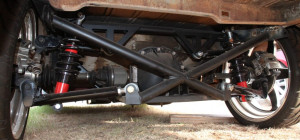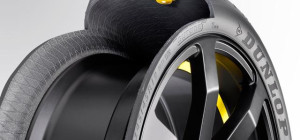 So you have a classic car and you want to restore it. You’ll be happy to know that restoring a classic car is fairly easy – you just need to have some time and a budget. Don’t expect the restoration process to be inexpensive, because you’ll need various auto parts and they are likely to be expensive.
So you have a classic car and you want to restore it. You’ll be happy to know that restoring a classic car is fairly easy – you just need to have some time and a budget. Don’t expect the restoration process to be inexpensive, because you’ll need various auto parts and they are likely to be expensive.
Don’t be disappointed to hear that the full restoration of a classic car could take several months. But the good news is there are cost-efficient ways to restore a car. Whether you’ll have to shell out a big sum of money or stay within a modest budget depends mainly on your car and the scale of the work required.
The condition of your car
Is your car old? Is it a second-hand car? Ws it involved in an accident in the past? If your vehicle is severely damaged, then the restoration process will be strenuous and time-consuming. On the other hand, if you just haven’t used your car for a while and it was previously in a serviceable condition, then it will require only cursory restoration. To assess the condition of your car prior to beginning the restoration work so you can get an idea of how many days the restoration work will take and how much money you’ll have to spend.
Authentic auto parts
The auto parts that you are going to use for restoration should be authentic. Take ample time and decide whether you need branded parts or non-branded parts. Branded parts will be expensive but of high quality, non-branded parts, on the other hand, are cheap but they can rank low on quality. So decide whether you will give priority to quality or budget. It is worth remembering that OEM parts will enhance the value of your car once it has been restored as many buyers want an all original vehicle.
Budget and work schedule
Both are important for restoring a car. Fixing a budget is more important because once you have set your budget you can set your work schedule accordingly. Make a list of all the parts that you’ll be needing such as the accessories, tires, bonnet, doors, quarter panel, fender, Rims, etc and then work out the costs and compare against your budget. When you are done with your final estimation of cost, add around an extra 30% because most of the time, the actual expenditure exceeds the estimated expenditure.
Once the budget is set, you should set a definitive work schedule. If the car needs to be dismantled, then you’ll have to begin working from the underside of the car up to the roof. Each step in the restoration process should be cataloged so you can figure out where a particular new piece of equipment needs to be installed and so that you don’t lose parts in the process of rebuilding the car. Remember, each nut and bolt is important and you can’t afford to take the risk of missing any of them.
Bodywork and mechanical work
Bodywork mainly refers to preparation and painting. If you go for an expensive prep and paint job, then it’ll cost you a large sum of money well in excess of $1000. Preparation for painting the body is where all the hard work is and you need to make sure you know how long this will take before booking the car in for the spray work at a body shop. You will need to make sure you have belt sanders and anti-corrosion products to convert rust to iron phosphate where it can’t be removed.
As for the mechanical restoration work, your priorities are overhauling the engine, fixing brakes, and changing failed electrical wiring and components, whilst overhauling the suspension parts and transmission parts. If you are opting for do-it-yourself, then you need to check auto websites for reference manuals and advice on how to remove parts and how to replace them without damage.
A number plate for personality
When restoring the car, you might want to give it a new personality. A simple way to achieve this is to get your car a personalised number plate. You can buy it from third-party service or directly from the DVLA. Before purchasing the number plate, you should see all the plate options available. Third-Party Brokers have millions of number plates available.
The registration numbers that follow a single digit prefix format such as A2 KFB are priced at the top of the range. Lower priced number plates can be purchased at around ₤250 – £300 with more expensive plates costing as much as ₤2,000. Investing in a personalised number plate can be a good approach. You don’t just simply buy a new personality for your car, but you invest in the future.
Wealthy people often hire car mechanics and hand them the entire restoration work-scope. Those with budgetary constraints may opt for a do-it-yourself approach providing they have the skills necessary. DIY can no doubt save you money, but diagnosing the car and fixing everything will take time and dedication. So you have to be very dedicated when defining your car restoration work-scope and you need to focus on the smallest of detail for the car restoration work.
A post byhttps://www.premier-plates.co.uk/







